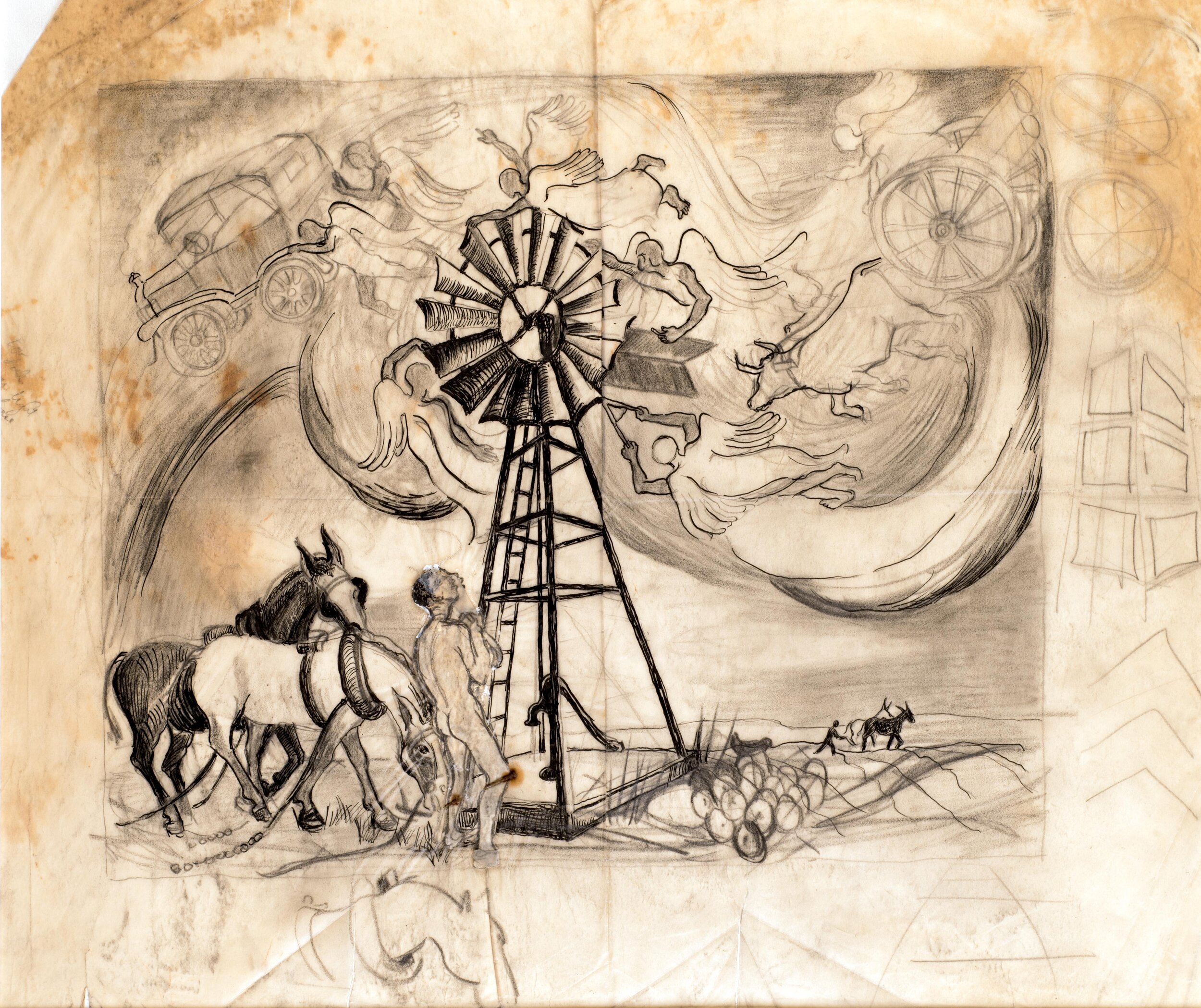Ezekiel Saw the Wheel
1941
Black-and-white lithograph
10” x 13 1/8” plate
There are studies of Ezekiel which show a tall athletic man standing in a field with hands clasped in prayer as he looks up above his windmill toward the sky. In the three versions it becomes apparent that a team of angels, cars, mules, and chariots are as present in heaven as they are on earth. The Copperville community told the artist what they saw when they sang this spiritual, and the notes have miraculously survived:
Ezekiel saw the wheel. Way in the middle of the air the little wheel turns by faith and the big wheel turns by the grace of God. Working in the fields, in close kinship with nature—the Negro relates all the wonders of the land and sky to the kingdom of God. What is more beautiful than this—He that hath eyes to see let him see—He can look over the harvest and the sowing and in it see miracles. The colored man—expert with his mules, skillful, patient—talks to them and sings as he works—looking in awe at the pageant of the sky and salutes his Creator in song. Using the simple symbols of his life—the plough and wheel—the storm—a modern Ezekiel still hears the voices of his God in the thunder.



